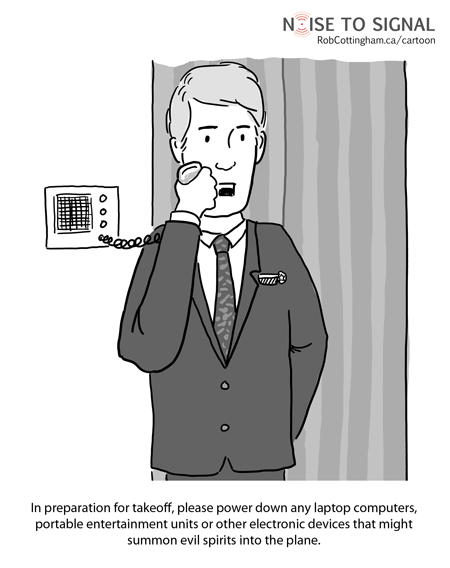Originally published on ReadWriteWeb
Fly any airline and you’ll see two parallel rituals being conducted just before takeoff: flight attendants politely reminding passengers to switch off everything remotely entertaining for their own safety, and a subset of the passengers covertly eking out every last second of keyboarding they can before they get caught.
For some of those passengers, the lack of compliance stems from an innate need to defy any authority; for others, a neurotic fear of even a nanosecond of unavoidable disconnection. And for still others, it comes from deep-seated skepticism that 21st-century airline avionics are really all that vulnerable to a few stray processor cycles and rogue oscillations.
I could easily see myself with a foot in each of those camps. (I’d need to graft on a whole new foot to achieve that, but work with me on this.) And yet…
See, here’s the thing. I know (roughly) the physics that keeps a multi-ton steel behemoth aloft. I know the huge amounts invested in the care and maintenance of its systems. I’ve flown countless times.
Yet to some prehistoric part of my brain, it still seems like a complete freaking miracle to me that those wheels actually do leave the tarmac for any significant length of time. And to keep that miracle happening long enough to get us to a safe cruising altitude, my inner awestruck Neanderthal is happy to switch off whatever gizmo it takes: iPad, Kindle, pacemaker… just name it.
But that’s me. When it comes to switching off before taking off, where do you land?

